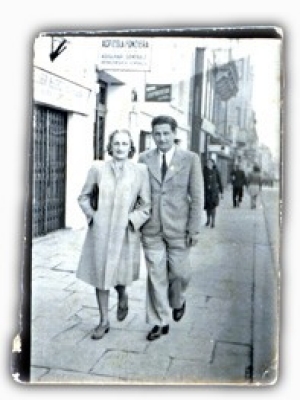Street Photographs: 'Before, During and After' the Holocaust
Monday, October 22, 2007, at 18:30
Concordia University, EV-1.615
 "A spot?," Hirsch/Spitzer family archive.
"A spot?," Hirsch/Spitzer family archive.
Marianne Hirsch
Colombia University
When historians, writers and artists turn to Eastern European photos from family albums or collections - photos from the decades preceding the Holocaust and the early years of World War II - they seek more than visual evidence of past events. Powerful "points of memory," photographs signal a visceral connection to the past, carry its traces forward, and embody the very fractured process of its transmission. And yet photographs may also be limited and flawed historical documents, promising more than they can actually reveal. Focusing on photos of Jews taken by street photographers on the main avenues of Cernauti, Romania, I show how they challenge the "before, during and after" timeline of Holocaust historiography that has come to be accepted as a given.
Marianne Hirsch is Professor of English and Comparative Literature at Columbia University where she also has an appointment in the Institute for Research on Women and Gender. Her recent publications include Family Frames: Photography, Narrative, and Postmemory (1997), The Familial Gaze (ed.1999), Time and the Literary (co-ed.2002), a special issue of Signs on "Gender and Cultural Memory" (co-ed. 2002), and Teaching the Representation of the Holocaust (co-ed. 2004). Currently, she is writing a look with Leo Spitzer, Ghosts of Home: Czernowitz and the Holocaust.

